Yves Klein Monochrome Bleu (IKB277) 1959 pigment and synthetic resin on paper laid on Plexiglas 20.5 x 17.2 cm (8 1/8 x 6 3/4 in) Signed and dated ‘Yves 59’ on the reverse. This work is registered in the Yves Klein Archive under the archive number IKB277.
Provenance Christie’s, Paris, Art d’Après-Guerre et Contemporain, 30 May 2007, lot 337 Private Collection, Belgium Exhibited Stockholm, Svenska-Franska Konstgalleriet, Yves Klein May 1963, no. 7 Catalogue Essay “First there is nothing, then there is deep nothing, then there is a blue depth.” GASTON BACHELARD The colour blue and Yves Klein’s name have become so closely intertwined that in French the expression, “le bleu Klein” is quite commonly used as an adjective in the design and fashion worlds. In fact, in 1960, the artist put down a patent for his blue establishing it as the International Klein Blue or IKB. This deep ultramarine blue became Klein’s official identity and his way to awaken his audiences’ sensibilities by letting them see firsthand the raw pigment and and its thick texture. As early as 1915, Russian avant-garde artists Kasimir Malevitch and Alexander Rodchenko strived to disconnect art from nature with monochrome forms as their operative mode. Klein differentiated himself from Malevitch by looking instead to Giotto’s blue frescoes from Assisi for the poetic aura he sought enable him to express “the absolute affective pictorial power of colour” (the artist in S. Stich, Yves Klein exh. cat, London: Hayward Gallery, 1995, p. 75). For contemporary artists such as Ad Reinhardt Robert Rauschenberg or Barnett Newmann, colour represented a progression away from representation whereas Klein from his first monochrome embraced a very specific pictorial and sensory effect – in fact, his work is almost representational in its effort to recreate the feeling of infinity when looking at a blue sky or sea. In 1956, while on vacation in Nice where he had grown up, Klein became focused on the colour blue, taking direct inspiration from the sky and sea of the Mediterranean. Instead of the common associations of the colour blue, such as melancholy, Klein saw his blue monochromes as an exploration of the immensity of space and the blue as illuminating space. Klein’s method consisted of stretching the canvas, which contained casein (milk protein) to make the paint adhere, on treated wood. He then painted the canvas with the blue pigment mixed with a fixative. In this way, he achieved the deep texture apparent in his paintings. Klein’s first exhibition of blue monochromes, entitled ‘Monochrome Proposition, Blue Period’, took place at the Galleria Apollinaire in Milan two years before he made the present lot. Most of the reviews were mixed; he was supported on the one hand by the playwright Dino Buzzati but on the other criticized for the parallels he made with Giotto. It’s interesting to note that the experimental Italian artists Piero Manzoni and Lucio Fontana attended, and were influenced by the exhibition. Manzoni, following the exhibition, focused his work on his ‘achromes’ while Fontana, an artist already established by that time, was already paralleling Klein’s approach with his ‘concetto spaziale’. In contrast to Klein, however, their work was non-emotive and Klein sought to bring out a spiritual dimension through his paintings. There are nearly two hundred monochromes known to exist yet such quantity, something perhaps feared by others in pursuit of the unique, did not matter to Klein – the more blue paintings he produced, the more people would fall under their spell. He saw himself merely as a mediator whose role was to reveal the beauty that was already present in the world. In 1960, he proclaimed, “Painting is no longer for me a function of the eye. My works are only the ashes of my art” (P. Karmel, ‘Yves Klein’, Art in America, December 1981). Painting for Klein was meant to be far more than an optical phenomenon, it was the means by which the spectator could see beyond the physical world. The present lot is a supreme example of this sublime other worldliness. Read More
Yves Klein Monochrome Bleu (IKB277) 1959 pigment and synthetic resin on paper laid on Plexiglas 20.5 x 17.2 cm (8 1/8 x 6 3/4 in) Signed and dated ‘Yves 59’ on the reverse. This work is registered in the Yves Klein Archive under the archive number IKB277.
Provenance Christie’s, Paris, Art d’Après-Guerre et Contemporain, 30 May 2007, lot 337 Private Collection, Belgium Exhibited Stockholm, Svenska-Franska Konstgalleriet, Yves Klein May 1963, no. 7 Catalogue Essay “First there is nothing, then there is deep nothing, then there is a blue depth.” GASTON BACHELARD The colour blue and Yves Klein’s name have become so closely intertwined that in French the expression, “le bleu Klein” is quite commonly used as an adjective in the design and fashion worlds. In fact, in 1960, the artist put down a patent for his blue establishing it as the International Klein Blue or IKB. This deep ultramarine blue became Klein’s official identity and his way to awaken his audiences’ sensibilities by letting them see firsthand the raw pigment and and its thick texture. As early as 1915, Russian avant-garde artists Kasimir Malevitch and Alexander Rodchenko strived to disconnect art from nature with monochrome forms as their operative mode. Klein differentiated himself from Malevitch by looking instead to Giotto’s blue frescoes from Assisi for the poetic aura he sought enable him to express “the absolute affective pictorial power of colour” (the artist in S. Stich, Yves Klein exh. cat, London: Hayward Gallery, 1995, p. 75). For contemporary artists such as Ad Reinhardt Robert Rauschenberg or Barnett Newmann, colour represented a progression away from representation whereas Klein from his first monochrome embraced a very specific pictorial and sensory effect – in fact, his work is almost representational in its effort to recreate the feeling of infinity when looking at a blue sky or sea. In 1956, while on vacation in Nice where he had grown up, Klein became focused on the colour blue, taking direct inspiration from the sky and sea of the Mediterranean. Instead of the common associations of the colour blue, such as melancholy, Klein saw his blue monochromes as an exploration of the immensity of space and the blue as illuminating space. Klein’s method consisted of stretching the canvas, which contained casein (milk protein) to make the paint adhere, on treated wood. He then painted the canvas with the blue pigment mixed with a fixative. In this way, he achieved the deep texture apparent in his paintings. Klein’s first exhibition of blue monochromes, entitled ‘Monochrome Proposition, Blue Period’, took place at the Galleria Apollinaire in Milan two years before he made the present lot. Most of the reviews were mixed; he was supported on the one hand by the playwright Dino Buzzati but on the other criticized for the parallels he made with Giotto. It’s interesting to note that the experimental Italian artists Piero Manzoni and Lucio Fontana attended, and were influenced by the exhibition. Manzoni, following the exhibition, focused his work on his ‘achromes’ while Fontana, an artist already established by that time, was already paralleling Klein’s approach with his ‘concetto spaziale’. In contrast to Klein, however, their work was non-emotive and Klein sought to bring out a spiritual dimension through his paintings. There are nearly two hundred monochromes known to exist yet such quantity, something perhaps feared by others in pursuit of the unique, did not matter to Klein – the more blue paintings he produced, the more people would fall under their spell. He saw himself merely as a mediator whose role was to reveal the beauty that was already present in the world. In 1960, he proclaimed, “Painting is no longer for me a function of the eye. My works are only the ashes of my art” (P. Karmel, ‘Yves Klein’, Art in America, December 1981). Painting for Klein was meant to be far more than an optical phenomenon, it was the means by which the spectator could see beyond the physical world. The present lot is a supreme example of this sublime other worldliness. Read More
.jpg)
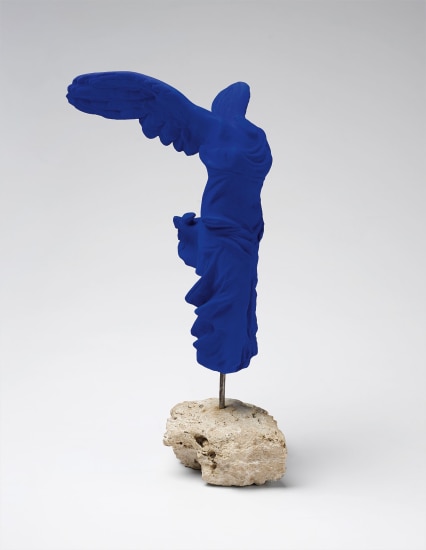
.jpg)
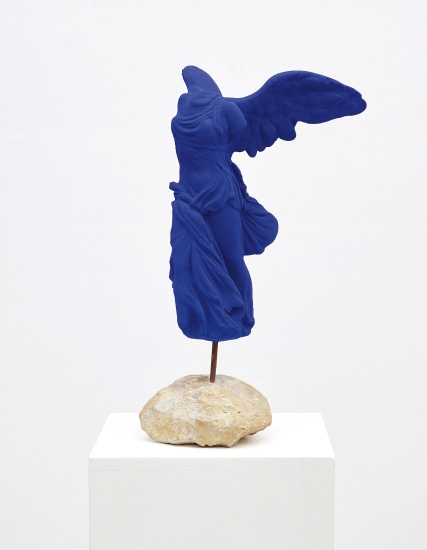
.jpg)
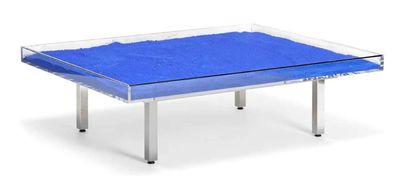


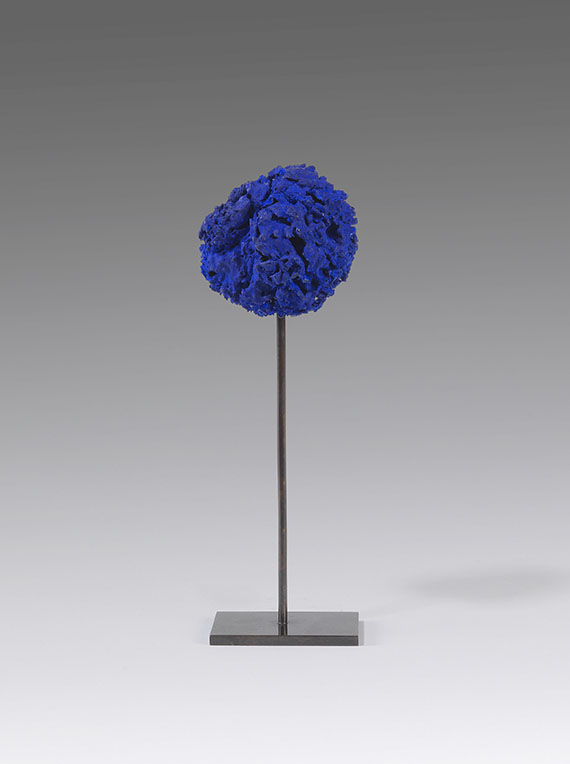

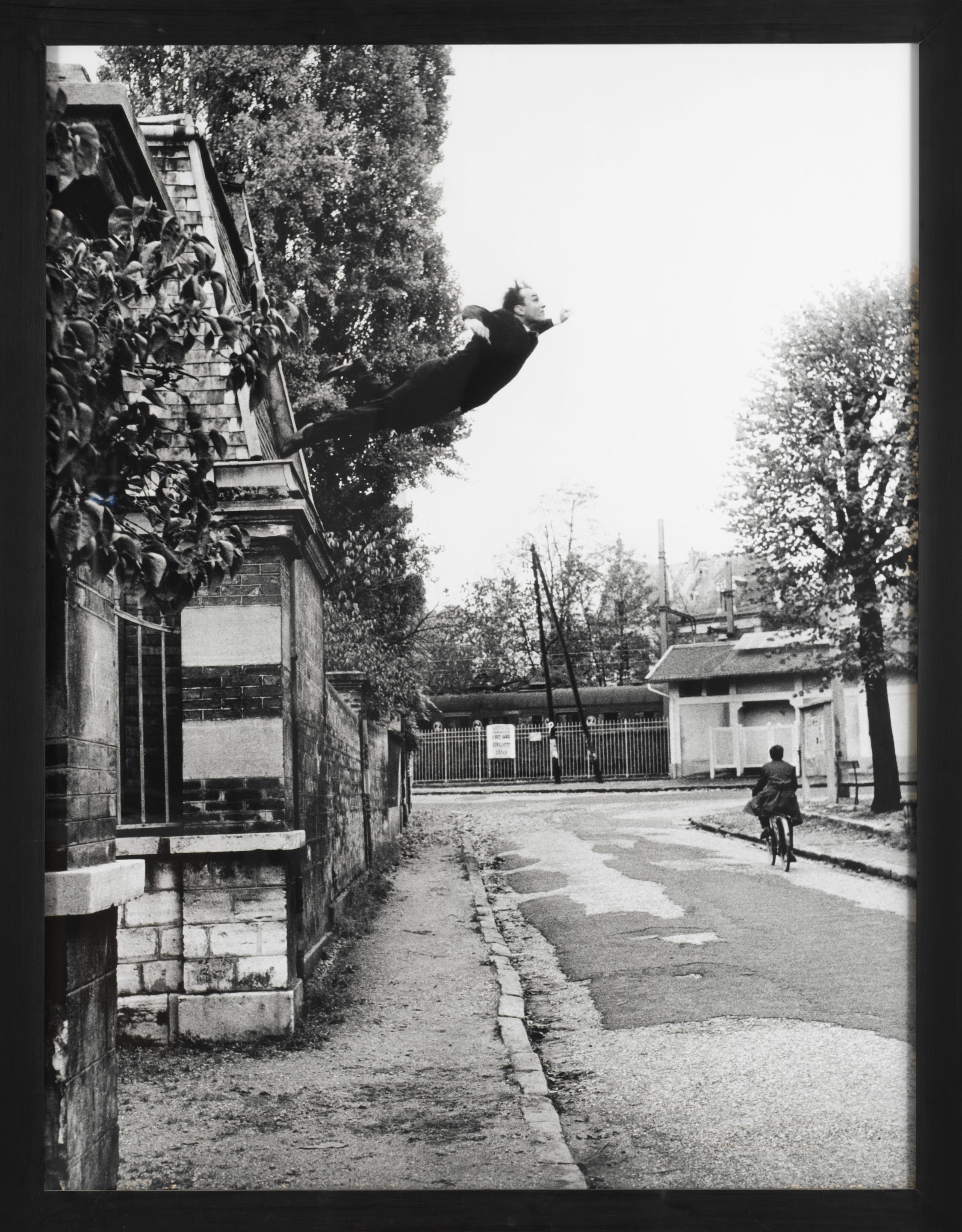


.jpg)

Try LotSearch and its premium features for 7 days - without any costs!
Be notified automatically about new items in upcoming auctions.
Create an alert